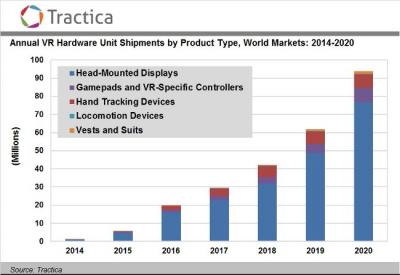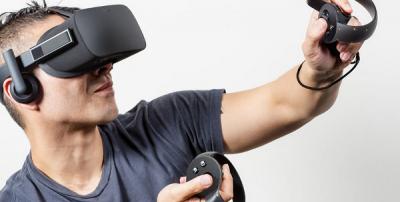According to Tractica, the market for VR headsets will grow quickly in the next few years, to reach over 76 million units shipped in 2020. Tractica says that this will mark the second VR market, and this time both the hardware makers and the content publishers are working to make sure they release appealing and fine-tuned products.

The VR market should be closely watched by OLED makers. This is one of those applications in which OLED displays have a clear advantage - and this time it is the fast response rate. LCD displays are simply not good enough - and so it is likely that most VR headset makers will adopt OLED displays.
In fact most VR headset producers are indeed using AMOLED displays - some of them first used LCDs but later switched to faster AMOLEDs. First we have Oculus with the twin-AMOLED rift, and Samsung display is using its own smartphone Super AMOLED display in the Gear VR (which was co-developed with Oculus). Sony's latest prototype uses an AMOLED too, as does the open-source Razor-backed OSVR, and some others as well.

One interesting OLED VR solution is the microdisplay-based VR headset that eMagin is developing. eMagin's solution uses two 2K by 2K OLED microdisplays and patented optics, and this solution is significantly smaller and more efficient than a smartphone-sized AMOLED headset. eMagin already announced that it has signed a non-exclusive IP licensing agreement for the HMD technology with an undisclosed company.

